Some of the links in this post may be affiliate links.
Rhipsalis is an extraordinary genus of cactus which deserves a spot in any houseplant collection. These epiphytic jungle cacti are very easy to grow, and add an unusual touch to your plant collection. So if you’re looking for a special plant, keep reading to learn about 22 beautiful Rhipsalis varieties.
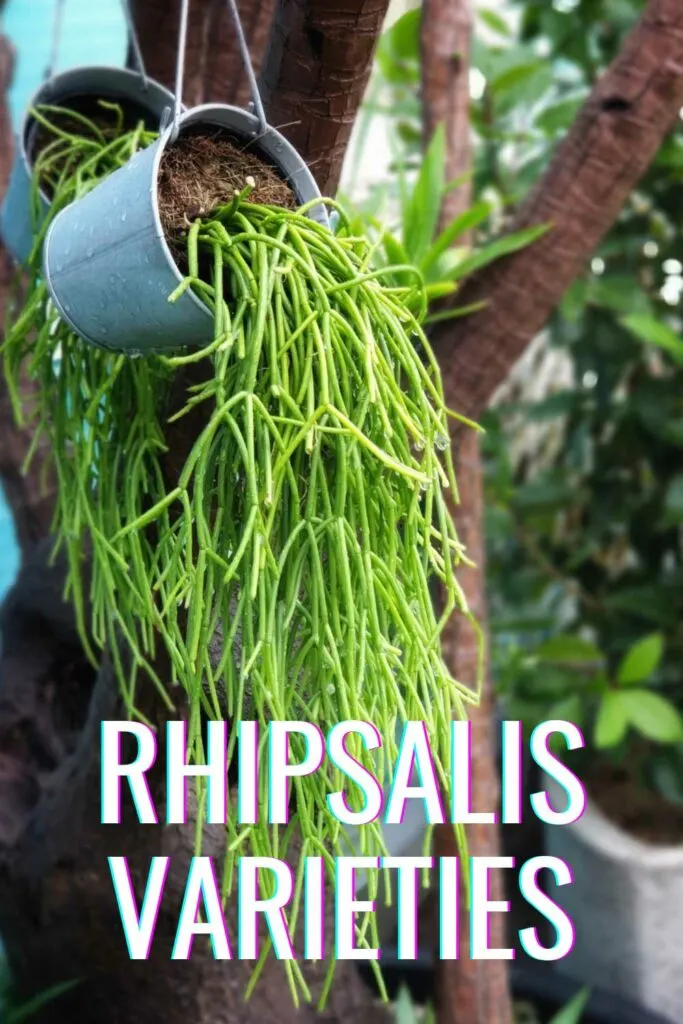
Rhipsalis is one of the largest genera of the epiphytic cactus family.
They are indeed cacti, but look much different than their desert cactus cousins, and grow in radically different environments. Rhipsalis grow in jungles on trees and they cascade down beautifully from tree tops.
They are native to the tropical rainforests of the Central and South America, parts of the Caribbean islands and a few regions of Africa and Asia.
Rhipsalis are known for being fuss-free, beginner-friendly and very beautiful hanging plant choices.
Rhipsalis also reward the growers with tiny, white flowers and sometimes, even beautiful red berries.
Table of Contents
21 Amazing Rhipsalis Varieties for Succulent Lovers
1. Rhipsalis baccifera
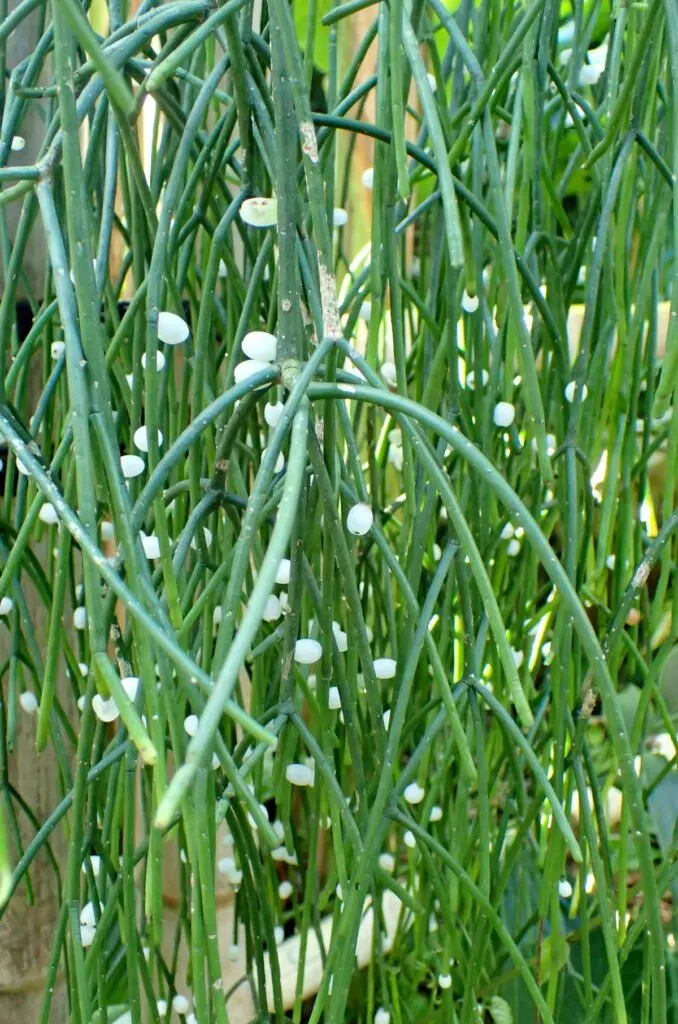
Rhipsalis baccifera or Mistletoe Cactus, is one of the most commonly available varieties of
Rhipsalis. The plant is also known as Spaghetti Cactus for its delicate, thread-like stems which hang down as clusters from the roots.
In ideal conditions in nature, the stems can reach lengths of 30 feet or 9m, but nothing close to this inside of an average home.
During winter and spring, the plant also produces tiny, white flowers along the green stems, which resemble beautiful pearls. The fleshy red berry-like fruits attract pollinators like birds which disperse their seeds.
R. baccifera is endemic to Central and South America, the Caribbean, Florida, as well as Africa and Madagascar.
2. Rhipsalis cereuscula
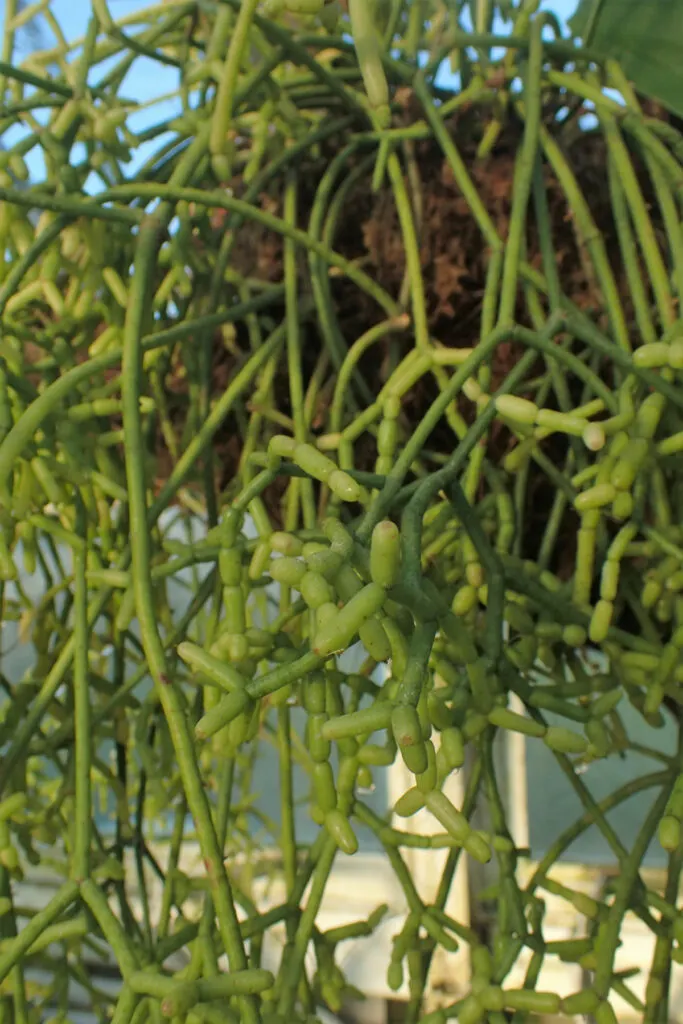
Rhipsalis cereuscula is a lovely species whose native range is Bolivia to Brazil and Argentina.
The plant has a shrubby growth habit with bright green stems that are covered with
clusters of small, rice-shaped joints. It is also called Rice Cactus and Coral Cactus for its uncanny resemblance to corals.
As the plant matures, the stems turn stubby and smooth and grow horizontally to fill up the container with greenery.
3. Rhipsalis paradoxa
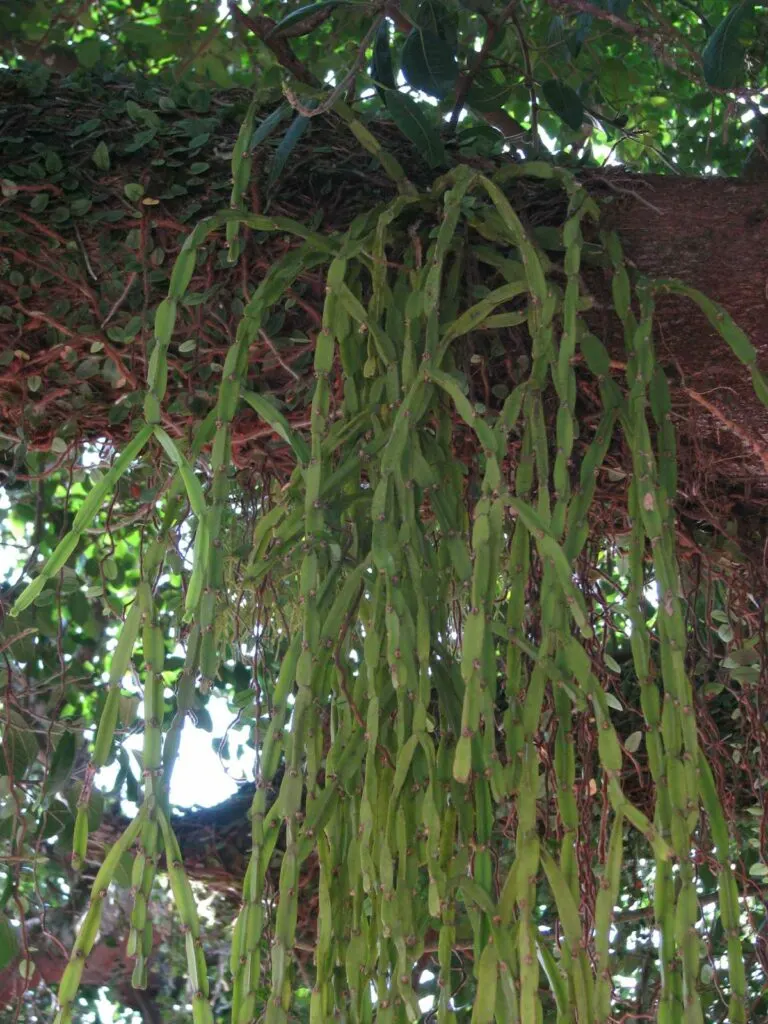
If you are a jungle cactus lover, there is no way you can miss out on Rhipsalis paradoxa. This gorgeous variety of Rhipsalis is striking with its flattened green stems and serrated edges.
Native to Brazil, Rhipsalis paradoxa is also known as the Chain cactus as its long, evergreen, pendulous stems resemble a green chain.
The plant is also known for its white showy flowers that look like tiny bells. These flowers bloom from late winter to early spring, offering good visual interest during the dull months of the year.
4. Rhipsalis pilocarpa
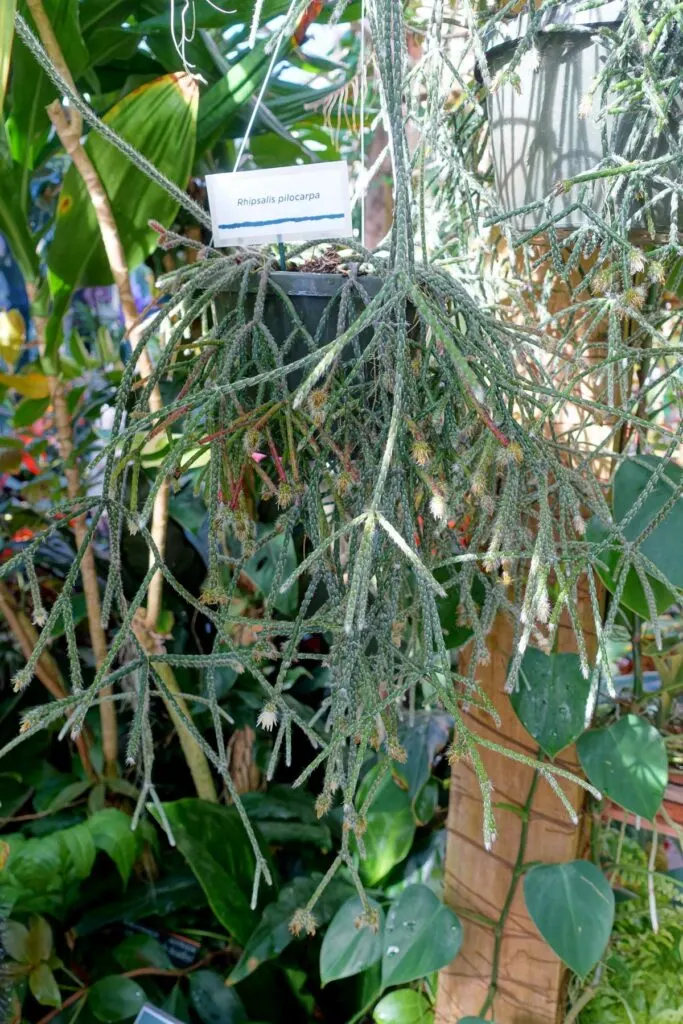
Rhipsalis pilocarpa is native to Brazil and is also known as the Hairy stemmed Cactus for
its long and hairy cylindrical stems which grow up to 45 cm long.
Attractive white and pink flowers that suspend from the ends of the stems form in spring and summer.
R. pilocarpa also produces hairy, dark red berries for which the plant gets its other
name, the Hairy-fruited Wickerware Cactus.
5. Rhipsalis burchellii
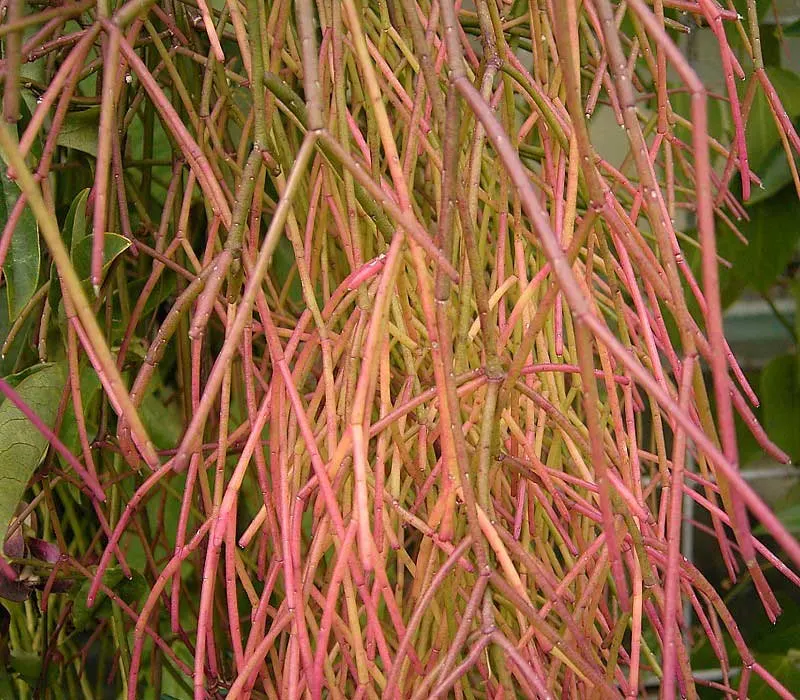
Rhipsalis burchellii makes for a gorgeous plant choice to display in hanging baskets.
Native to Brazil, the plant features stubby, succulent stems covered in fine hair.
When exposed to bright light, the ends of the stems turn into a beautiful pink shade. Small white flowers followed by pink berries loosely hang from the stems.
6. Rhipsalis elliptica
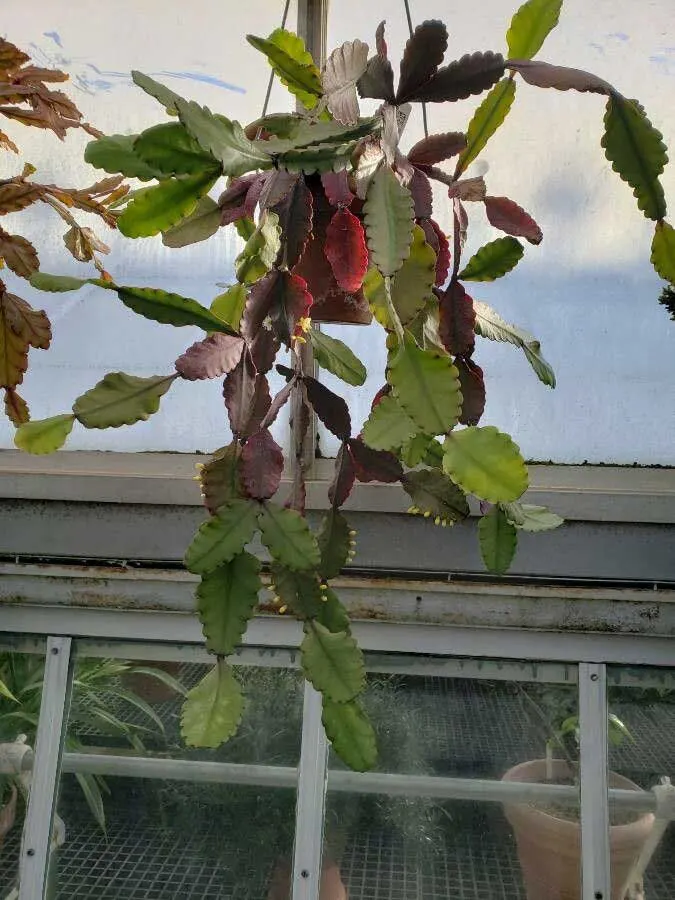
Rhipsalis elliptica features round, fleshy stems with scalloped edges. In full sun, the green color of the stems turns into a rich coppery brown, providing color and interest in your indoor garden.
Adding to its beauty are the small, yellowish-white flowers which appear in late winter and early spring.
R. elliptica is native to Brazil, where it grows naturally in a seasonally dry tropical biome
7. Rhipsalis pachyptera
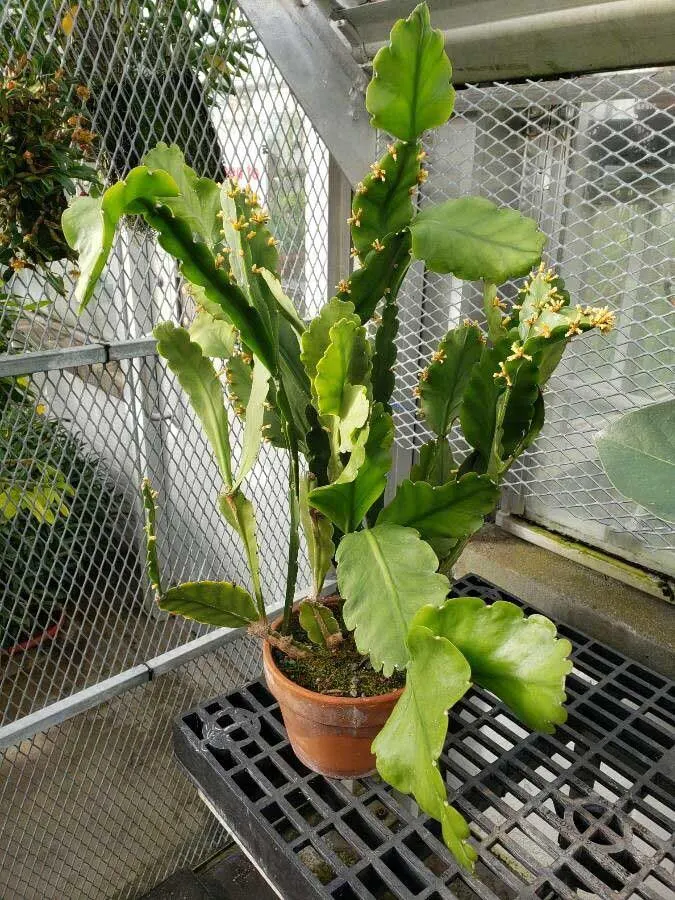
Rhipsalis pachyptera is native to Brazil and interestingly, what we would normally call leaves are not true leaves, but rather, flattened joints of the stems which appear
broad and leaf-like.
These “leaves” are a dark green to red color which offer a perfect contrast to the yellow-white flowers which grow as clusters along the nodes.
8. Rhipsalis ewaldiana
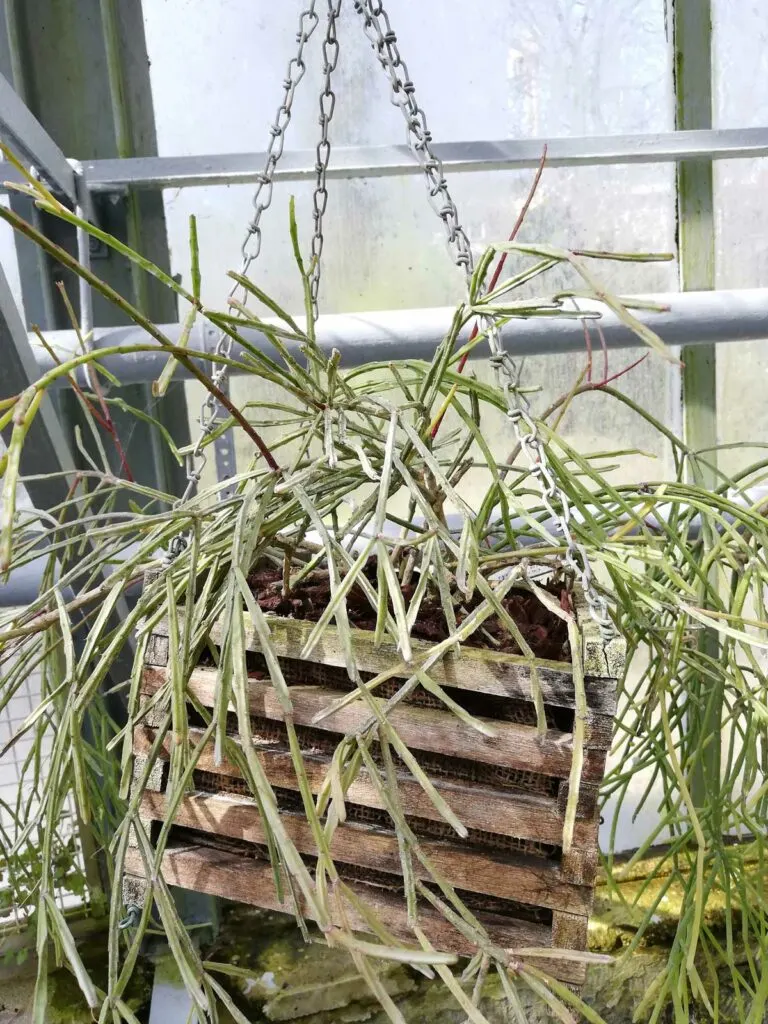
Rhipsalis ewaldiana is native to Brazil and grows in a wet, tropical biome.
The plant has a bushy appearance as the stems flare out in multiple directions.
The young stems (usually the tips) have a bright yellow-orange color and slowly turn into a deep green as they get older.
As a bonus, the plant will also reward you with clusters of white flowers along the stems.
9. Rhipsalis micrantha
A synonym for Rhipsalis micrantha is Rhipsalis roseana.
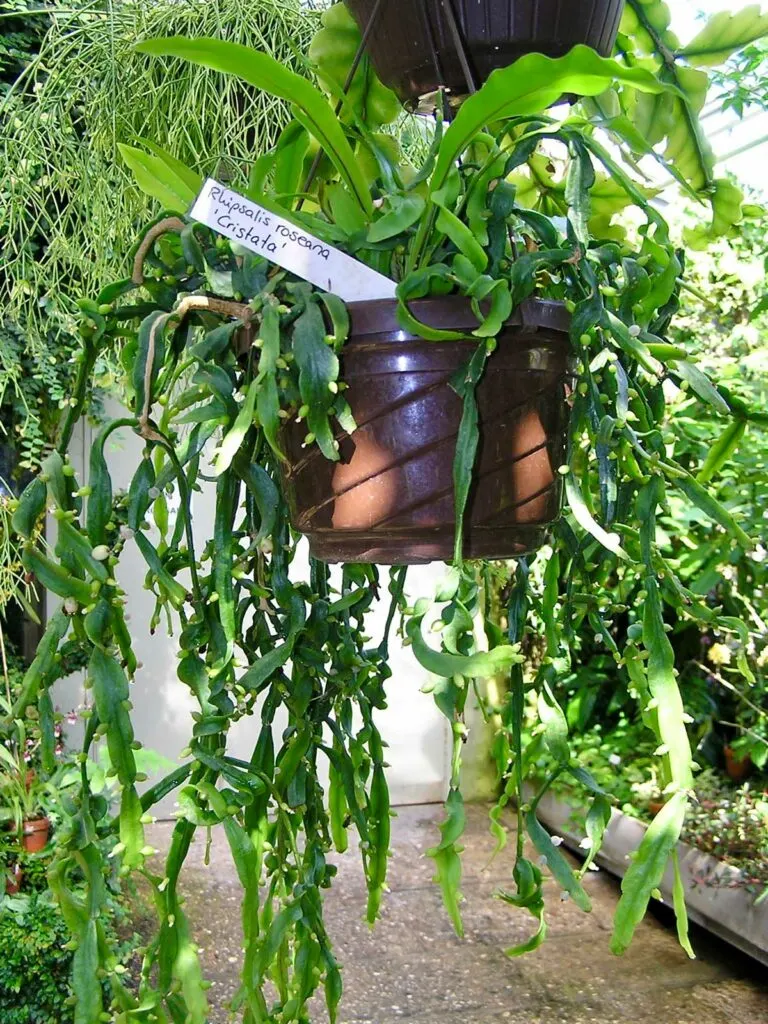
Rhipsalis micrantha is a lovely variety of the Cactaceae family which is native from Costa
Rica to western Venezuela and northern Peru.
The plant has green, flattened stems which elegantly grow from ceiling to floor, making them the perfect specimens for hanging baskets. A light pruning can keep the plant’s length in check.
10. Rhipsalis clavata
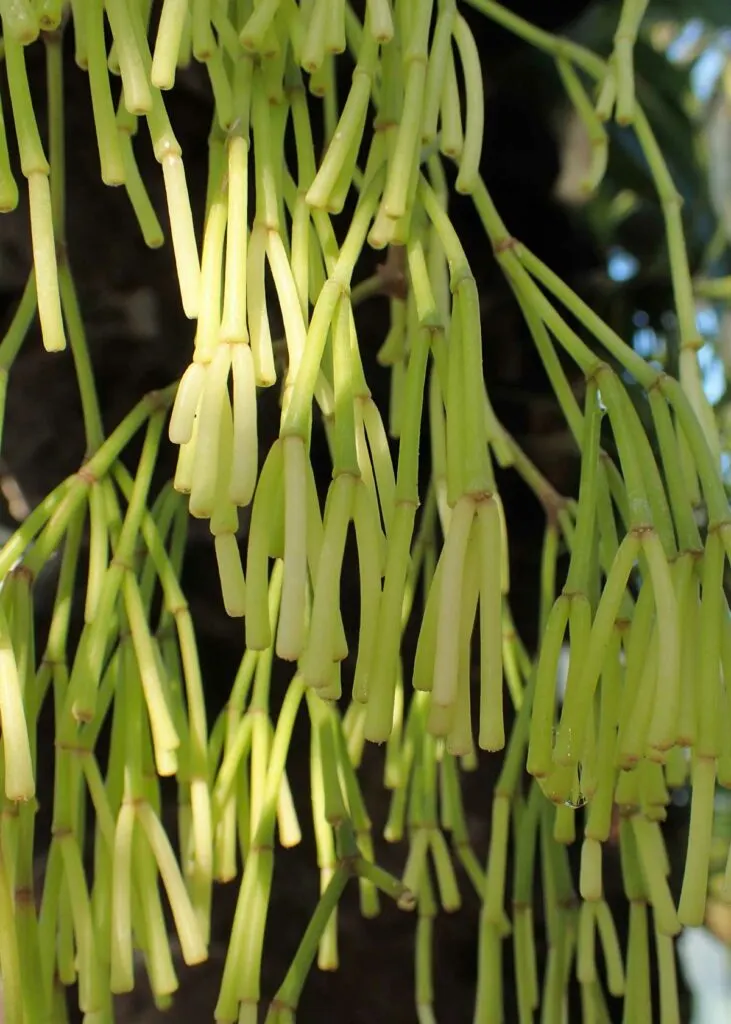
Rhipsalis clavata is one of the most sought-after varieties of Rhipsalis for its unmatched
elegance. The plant has light green pendent stems which gracefully dangle downwards.
Tiny, bell-like, white flowers open sporadically all year long.
R. clavata is native to Brazil and is also known as the Sausage Chain cactus as the stems look like a string of tiny sausages.
11. Rhipsalis ramulosa
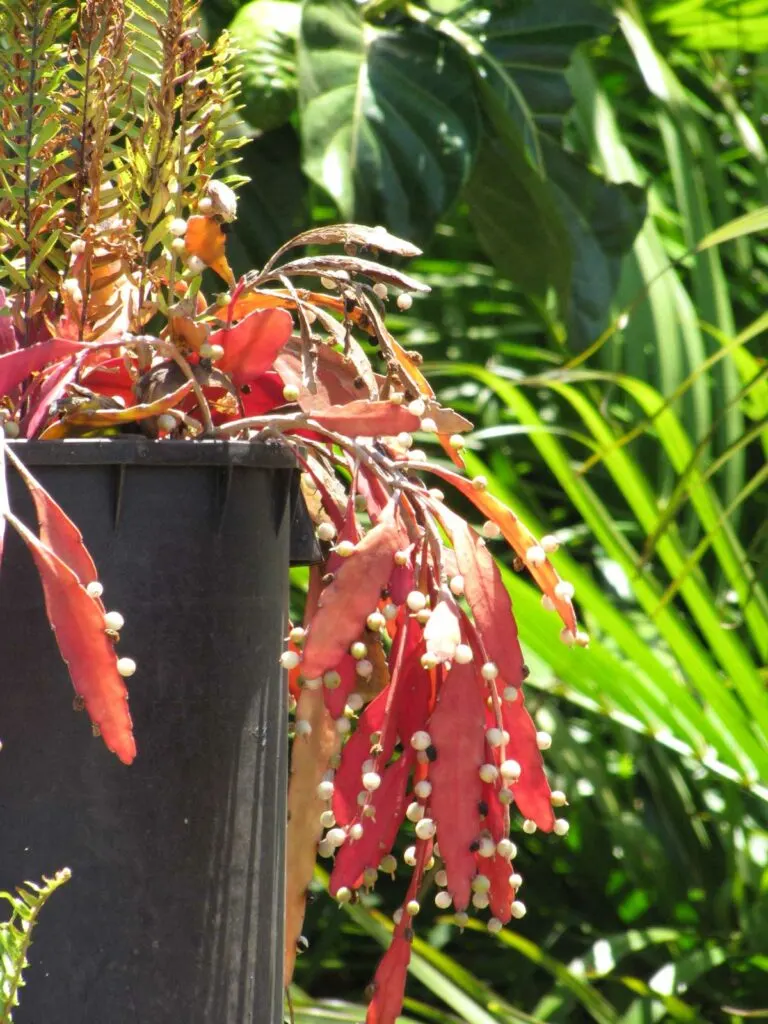
Rhipsalis ramulosa or Red Coral Rhipsalis deserves a center stage in your indoor garden for its spectacular foliage.
Rhipsalis ramulosa is actually a synonym for the accepted species name, Pseudorhipsalis ramulosa.
The plant has a wide native distribution which ranges from the jungles of Central America to Central and Northwestern parts of South America.
It features flat, reddish purple stems that turn into an attractive deep violet red in strong light.
The plant will form white, bead-like berries.
12. Rhipsalis cereoides
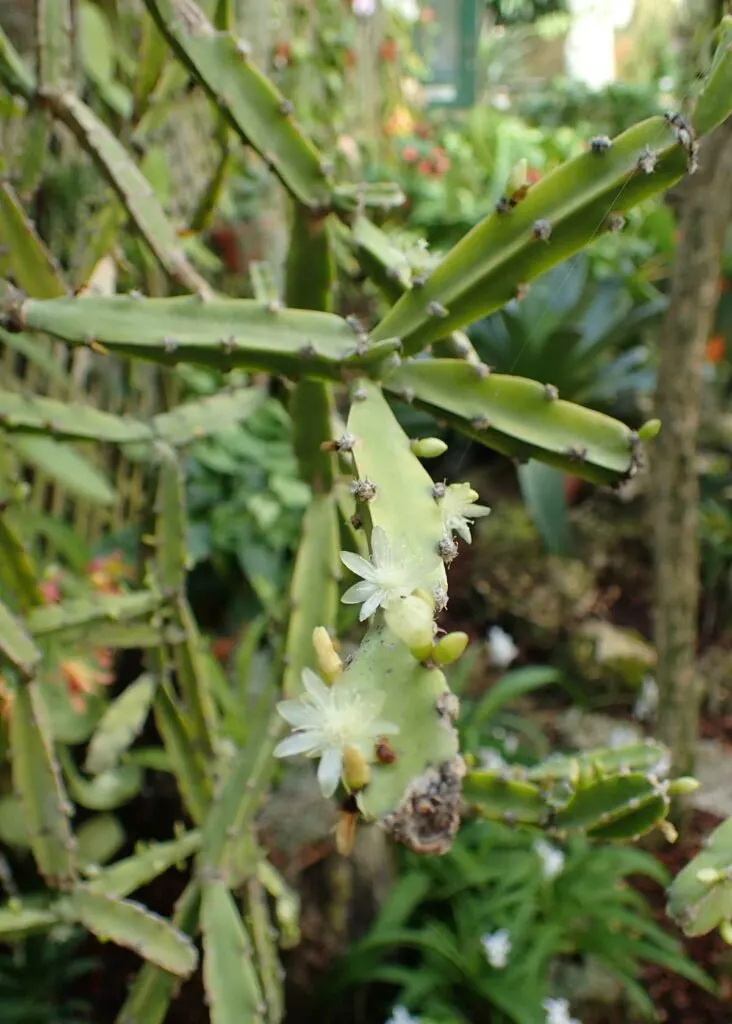
Rhipsalis cereoides is another impressive variety of Rhipsalis which naturally grows as a
lithophyte in Rio de Janeiro and Espirito Santo of Brazil.
The plant features triangular to quadrangular-shaped woody green stems with reddish joints.
R. cereoides produces clusters of small, white flowers which turn into pinkish berries.
13. Rhipsalis mesembryanthoides
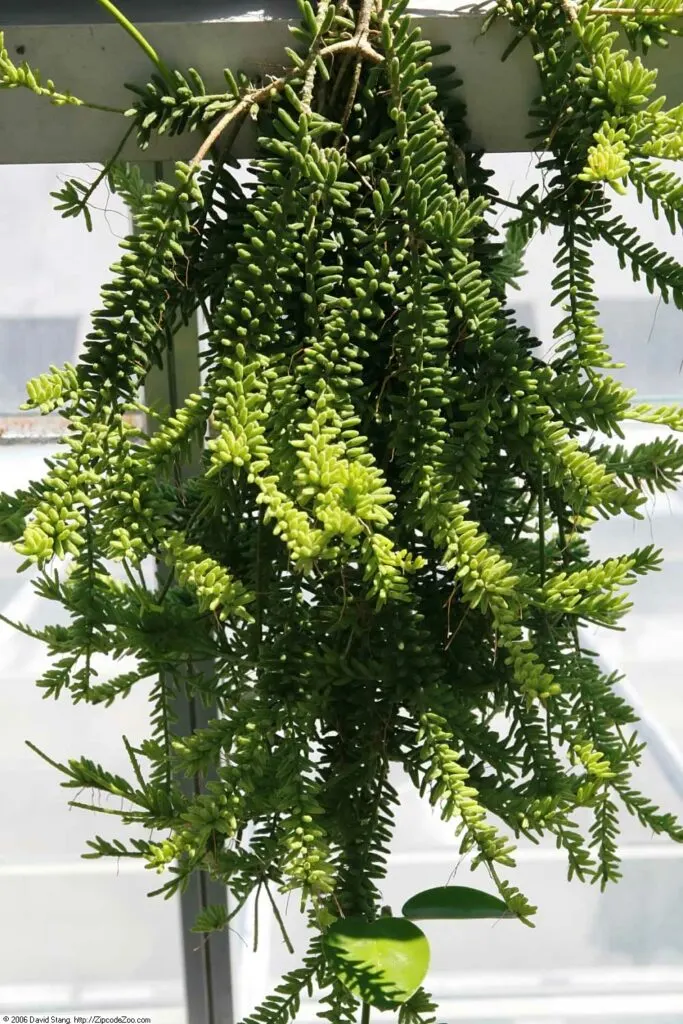
Rhipsalis mesembryanthoides is native to Brazil where it grows as an epiphytic cactus at
altitudes of 2000 feet above sea level.
The plant is also known as the Clumpy Mistletoe Cactus for its thick and strong stems which form an attractive green mound.
Delicate white to pink-colored flowers appear on the branchlets.
14. Rhipsalis agudoensis
Rhipsalis agudoensis has a close resemblance with R. cereoides, except that the triangular
stems look red when young and slowly turn into green as they mature.
This Brazilian native has woody stems that have 3-4 angles. The growth habit is pendulous.
R. agudoensis produces white flowers which fill the air with a mild fragrance. The blooms are followed by round, magenta-pink fruits.
15. Rhipsalis pentaptera
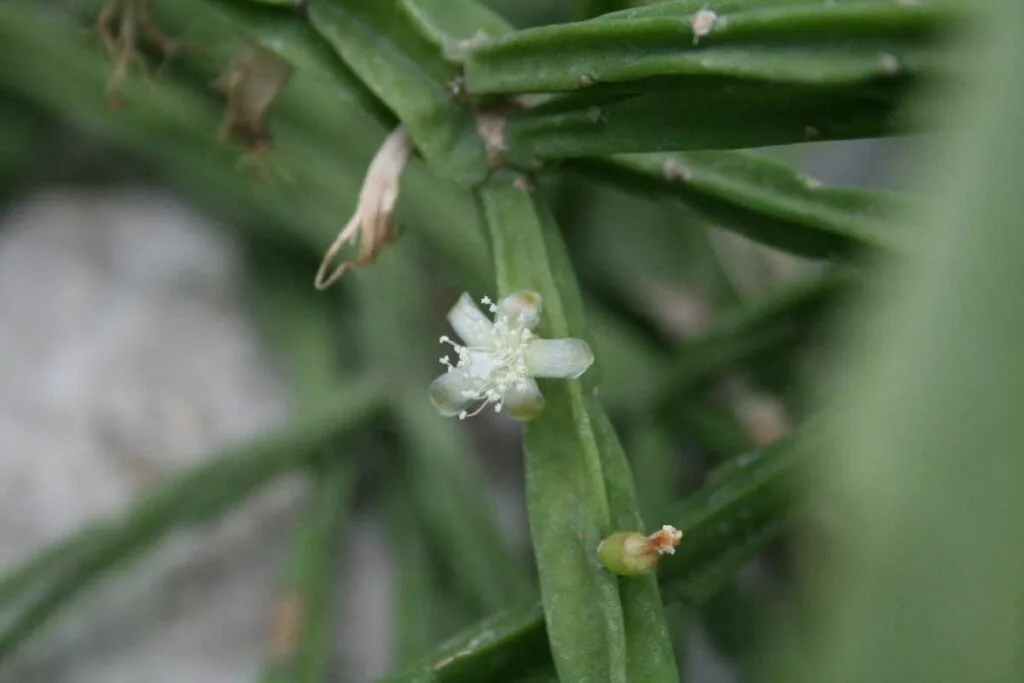
Rhipsalis pentaptera is a lovely variety whose name comes from the Greek words, penta (five) and pteron (wing). The plant is native to South-eastern Brazil, where it grows at low altitudes.
The green woody stems have 5-6 angles which look like twisted wings, and plant has a a pendulous growth habit. Creamy white to red colored flowers grow along the stems making for a gorgeous sight.
16. Rhipsalis oblonga
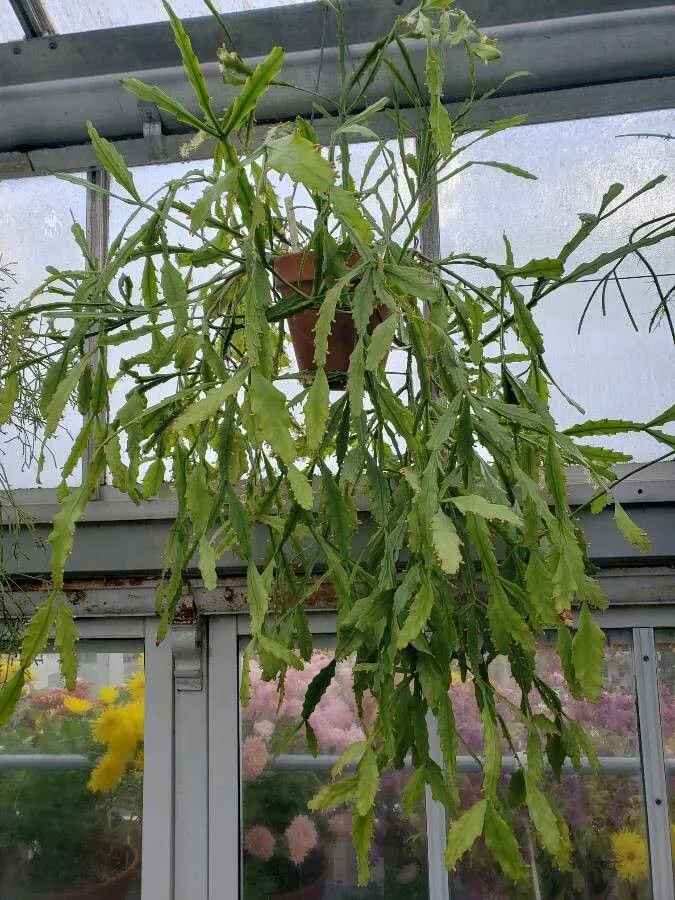
Rhipsalis oblonga is a beautiful species which has a trailing habit and reaches up to
around 2.5m in length.
The species is native to Brazil where it grows in extremely humid conditions. The stems look wavy with serrated edges, along which small white flowers appear and turn into pinkish-white fruits.
17. Rhipsalis campos-portoana
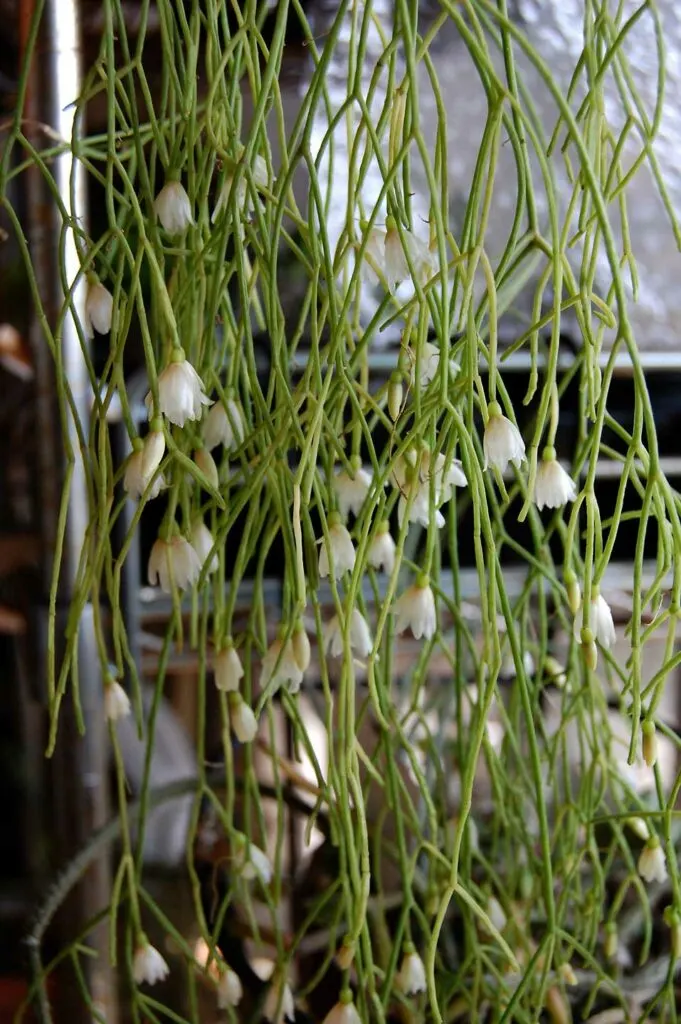
Rhipsalis campos-portoana is a whimsical species of Rhipsalis which has clusters of long, slender stems that hang downward. The species is native to Brazil.
The plant features light green stems from which beautiful bell shaped flowers tangle down.
18. Rhipsalis cruciformis
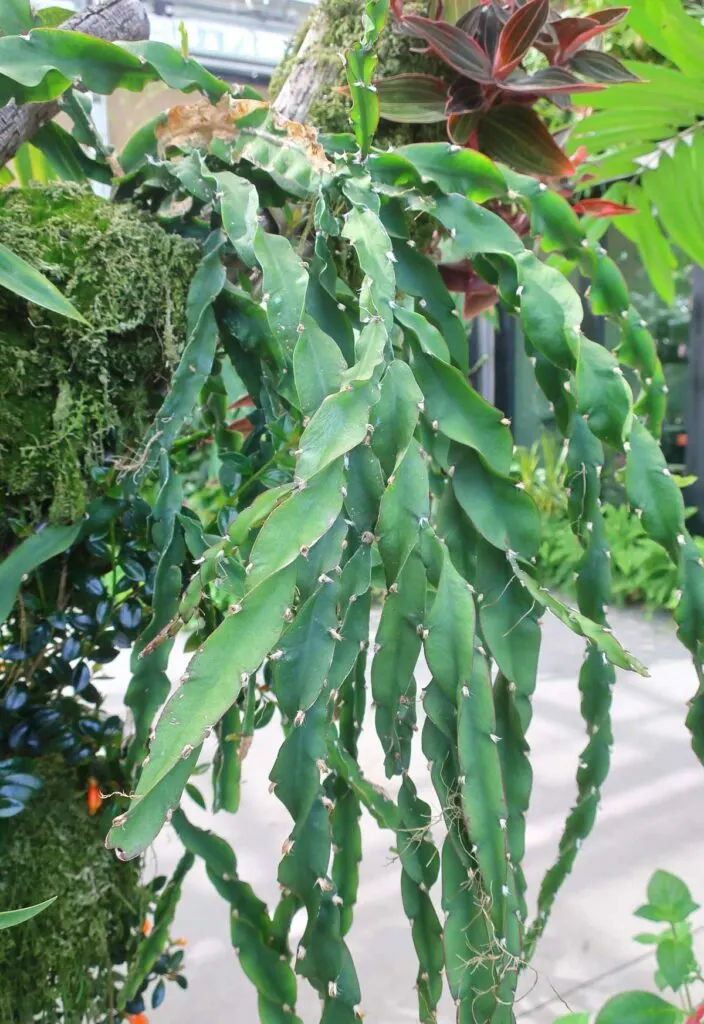
Rhipsalis cruciformis, a synonym of the accepted species Lepismium cruciform, is native to Brazil, Argentina and Paraguay.
The plant features angular, segmented stems, and the areolas have tiny white tufts of hair instead of spines, giving a unique appearance to the plant.
R. cruciformis also bears beautiful reddish-white flowers which are followed by decorative red
berries.
19. Rhipsalis teres
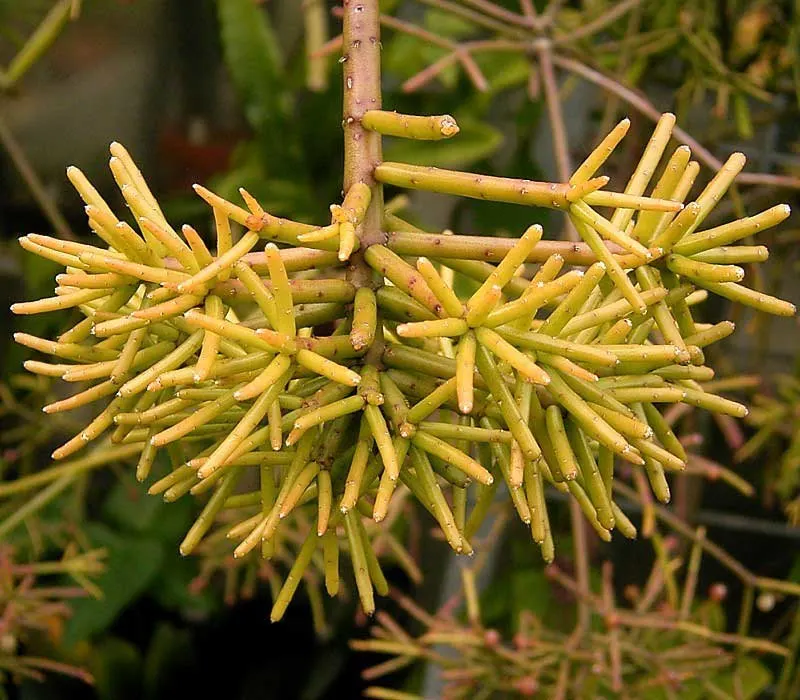
Rhipsalis teres looks quite funky with its long and thin multi-branched stems that stay erect
when young and start trailing as they grow in length.
Sometimes known as Rhipsalis prismatica, the accepted name is Rhipsalis teres.
The species is native to Brazil and is also known as Quill-like Wickerware Cactus. Spring and summer are the best seasons to enjoy its true beauty as the white, star-shaped flowers start showing up.
20. Rhipsalis rhombea
Rhipsalis rhombea is a stunning cactus which grows in the tropical jungles of Brazil.
The plant features flat and wavy green leaves which turn into a rich coppery red under bright
sun, which explains the reason for its other name, the Copper Branch cactus.
Pale yellow colored flowers grow along the edges of the stems which later transition into red fruits.
21. Rhipsalis goebeliana
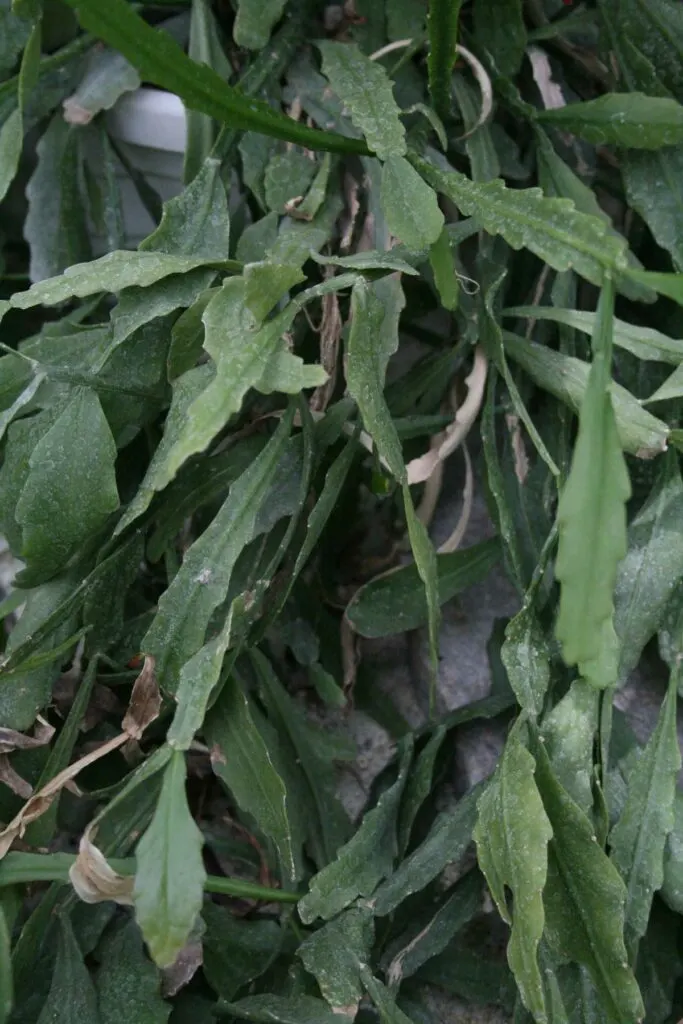
Rhipsalis goebeliana is native to Bolivia and has flat, segmented leaves with wavy edges.
The leaf color can vary from olive green to dark green depending on the stage of maturity. Small, yellowish-white flowers that bloom along the edges are highly fragrant and fill the air with a rich fragrance.
I hope these Rhipsalis varieties have inspired you to expand your succulent collection. And don’t miss my post on how to propagate Rhipsalis. It is super easy to do!
Do you have any Rhipsalis? Comment below. I’d love to hear!

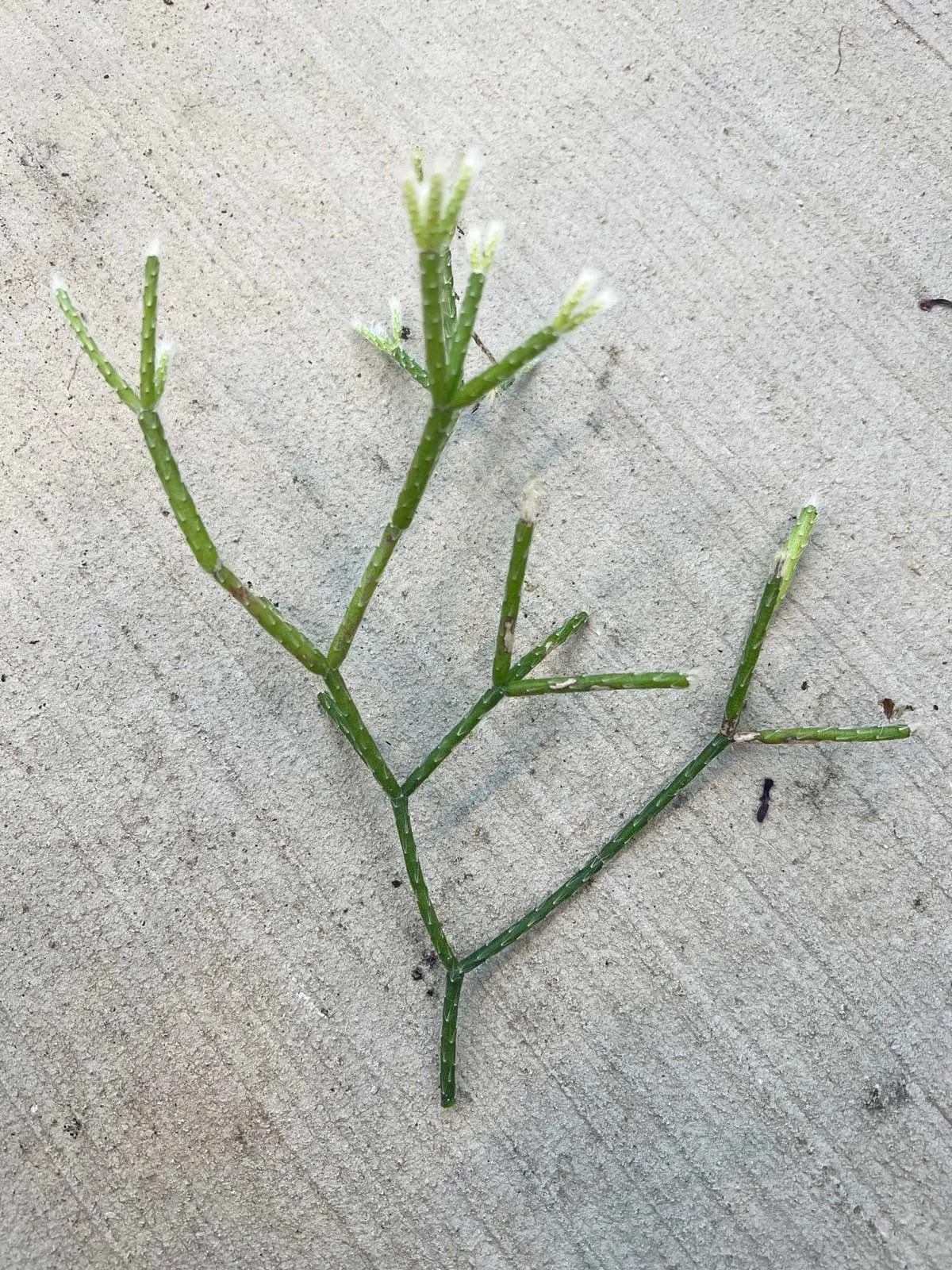
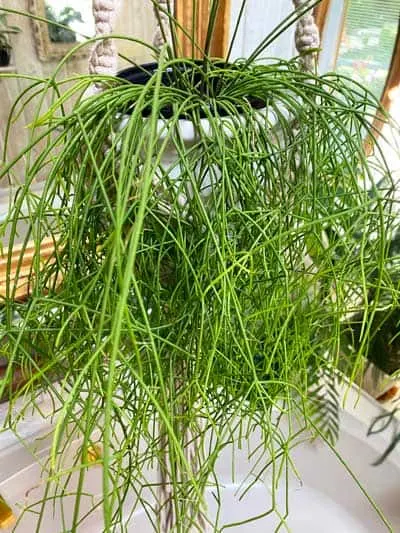
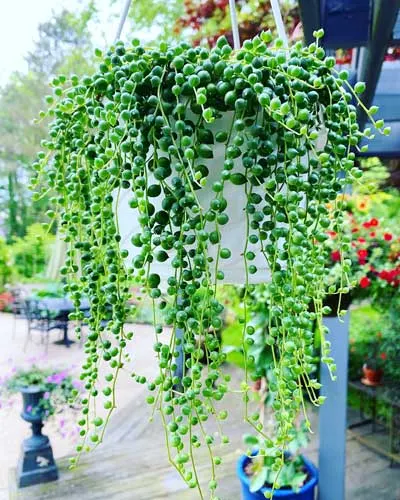
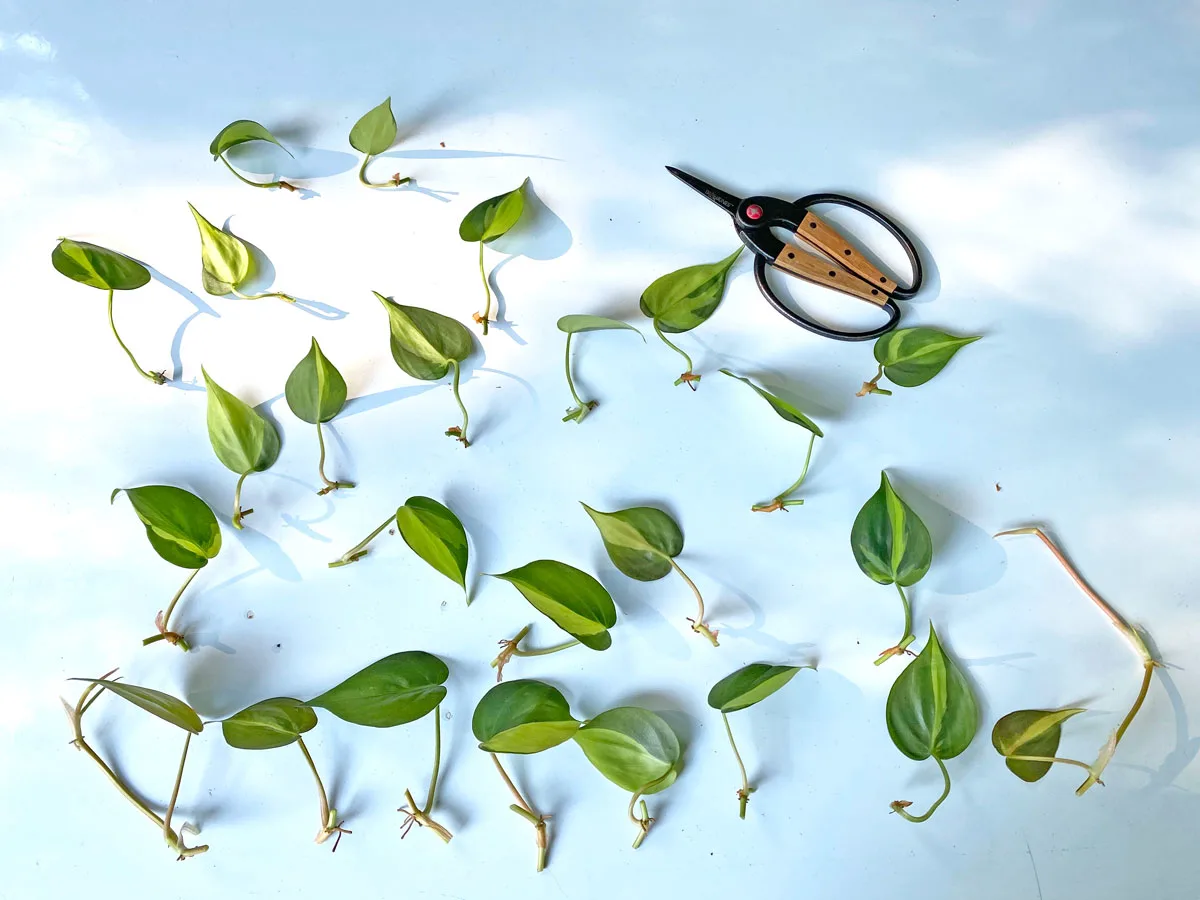
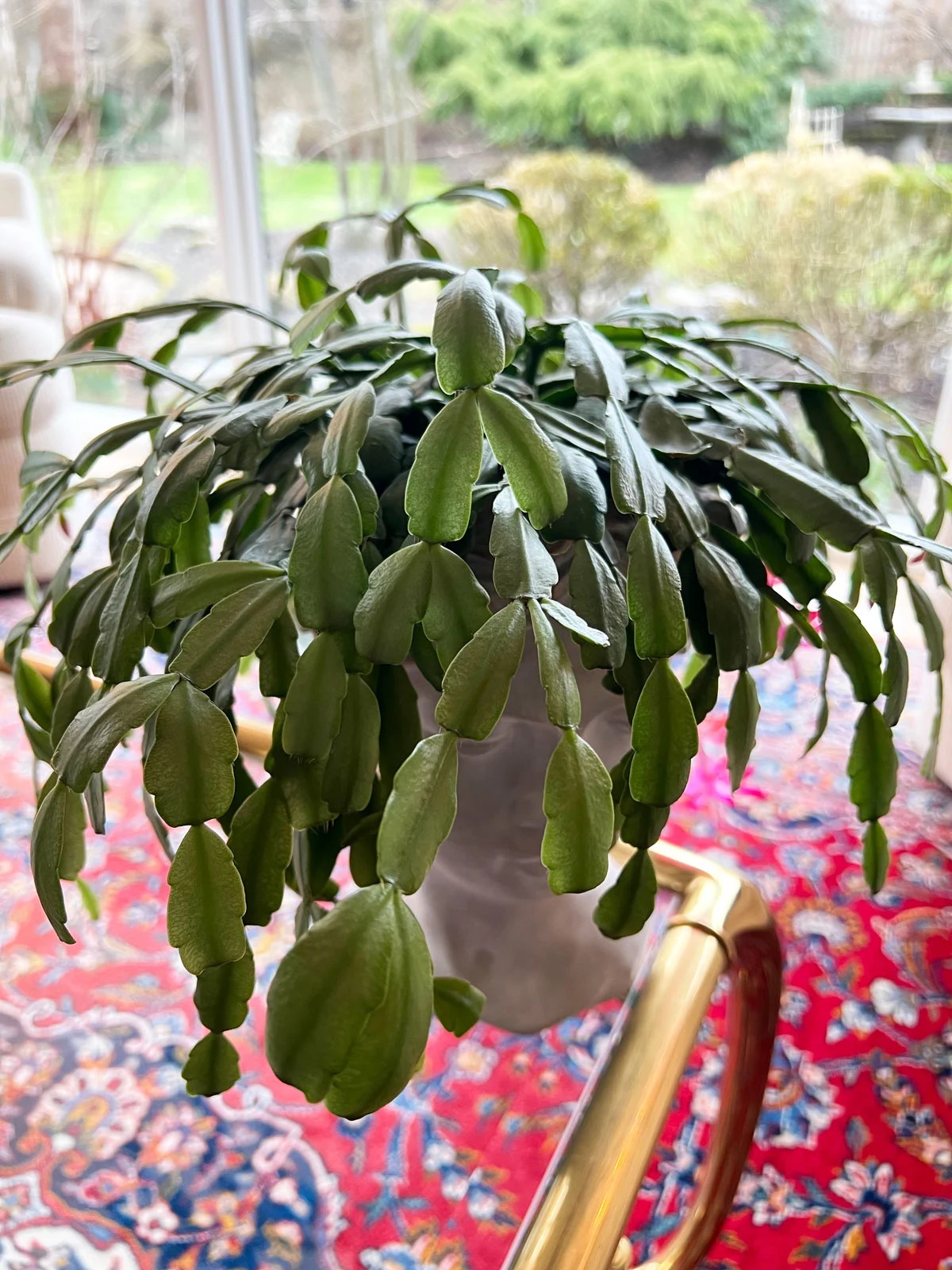
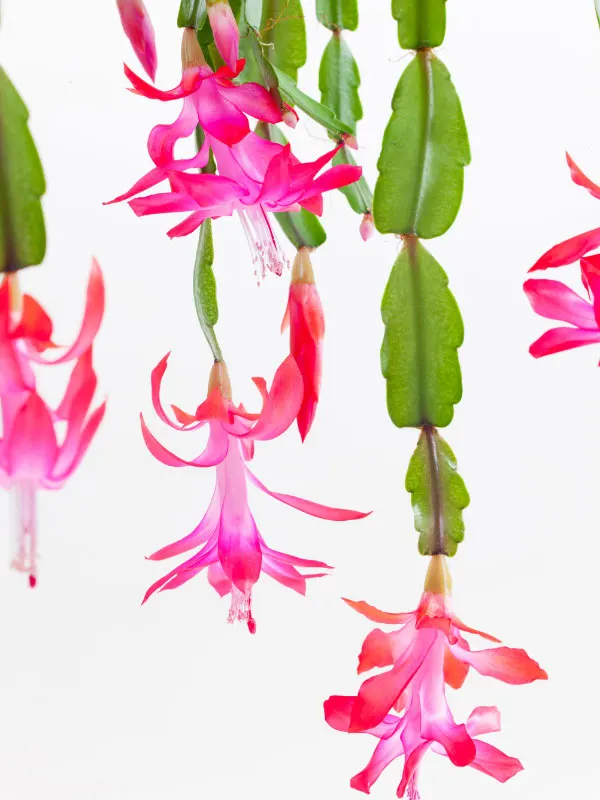
Susan Jones
Monday 23rd of October 2023
PS. I can’t tell the difference between Crispata and Elliptica.
Susan Jones
Monday 25th of March 2024
@Susan Jones, I keep gifting myself with rhipsalis and epiphyllum. I also have difficulty discerning between crispada, oblongada, and several similar looking plants.s
Susan Jones
Monday 23rd of October 2023
I have several varieties: Epiphyllum (German Princess) Doscovactus, , Rhipsalis Crispata, Rhipsalis Elliptica, Lepisium Cruciforme (Hurricane Cactus), Rhipsalis Paradoxa (Chain Cactus). I’ve become addicted to these plants.
Raffaele
Tuesday 24th of October 2023
What a lovely collection! I absolutely love these plants as well!
Chris
Thursday 18th of May 2023
Yes I have a few.Now I have found this page I can put correct names to the few I do have and know what others I would like to get some day.
I know I have the Paradox and the Pilocarpa , Rhipsalis baccifera Mistletoe Cactus
I might have the rhipsalis campos-portoana. MY friend gave me several cuttings and this might have been one of them. It islate here now. All lights are off.
I do see several here I would beinterested in in finding.
than you for your time in putting this together It is a great reference
Chris
Raffaele
Friday 19th of May 2023
Glad you enjoyed the post Chris!
Frank Copple
Thursday 23rd of March 2023
I have a variety of rhipsalis, which I believe came from Brazil. It’s blossoms are very pretty yellow flowers. I recently moved my plants to a Southern, more sunny location and one is continuously blooming. I’d like to send you photos but don’t see any link.
Raffaele
Friday 24th of March 2023
I purposely didn't include photos in comments to save on bandwidth, but it sounds like your plants are very happy Frank!